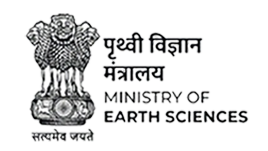









| Abstract Submission No. | ABS-02-0070 |
| Title of Abstract | Assimilation of Blended Sea Surface winds for simulating Tropical cyclones over the Indian Ocean |
| Authors | Nishtha Agrawal*, Dineshkumar Kevalji Sankhala, S. Indira Rani |
| Organisation | National Centre for Medium Range Weather Forecasting (NCMRWF) |
| Address | National Centre for Medium Range weather Forecasting (NCMRWF), Sec-62, Block A Noida, Uttar Pradesh, India Pincode: 201301 E-mail: nishtha@ncmrwf.gov.in |
| Country | India |
| Presentation | Oral |
| Abstract | Sea surface wind assimilation plays a pivotal role in the simulation of cyclone features. All the global leading operational Numerical Weather Prediction (NWP) centres assimilate space-based sea surface winds from various active instruments. Currently there are two scatterometer instruments, Advanced Scatterometers (ASCAT) onboard MetOp-B and MetOp-C, with nearly half an hour difference in the equator crossing time. NCMRWF receives ASCAT data over the Indian Ocean during 0600 and 1800 UTC assimilation cycles. This limits the updates of sea surface winds assimilation during 0000 and 1200 UTC assimilation cycles, based on which NCMRWF generates the long forecasts. National Oceanic and Atmospheric Administration (NOAA) has released a 6-hourly interval blended sea surface wind product with global coverage. The NOAA National Centers for Environmental Information (NCEI) Blended Sea Winds (NBS) product has been generated by blending multiple sources of satellite data including scatterometers, and microwave radiometers/imagers. In addition to these instruments, the NBS product also uses L-band (1.42 GHz) instrument on the Soil Moisture Active and Passive (SMAP) satellite and the AMSR-2 all-weather channel (6.9 GHz), which can provide the maximum winds up to 65 m/s, compared to the scatterometer limit of 25-30 m/s. Since the NBS uses many sources of data, and hence this product is not available in near-real time, and this limits its operational usage. However, these blended winds can be used in the assimilation in a lagged mode. In this study, these blended winds are used in the NCMRWF Unified Model (NCUM) assimilation and forecast system to simulate characteristics of two back-to-back cyclones formed over the Indian Ocean, Mocha, over the Northern Hemisphere and Fabien, over the Southern Hemisphere during May 2023. We expect a better simulation of cyclone features in terms of central pressure, track, maximum sustained wind, etc., due to the assimilation of the six hourly NBS. We also analyzed whether these cyclones have any impact on modulating the Indian southwest monsoon onset. |
| Keywords | Data Assimilation,Sea surface winds ,Tropical cyclone |
| For Awards | yes |